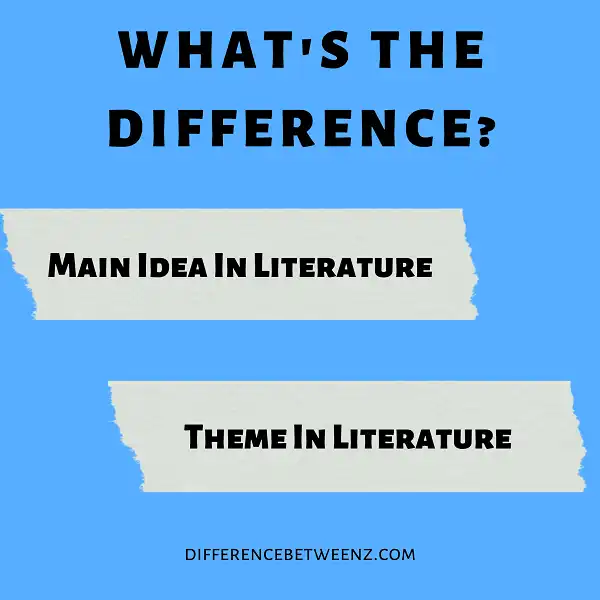When studying literature, it is important to understand the difference between the main idea and theme of a text. The main idea is what the author is trying to say in the text, while the theme is the larger lesson or moral that can be gleaned from the story. In order to fully appreciate a work of literature, it is necessary to understand both concepts.
What is the Main Idea In Literature?
In a nutshell, the main idea in literature is the author’s message or point. It is what the author wants to communicate to readers through their writing. This can be about any number of things, from love and loss to political corruption.
- The main idea is not always explicitly stated, but it can be inferred from the text. To figure out the main idea, ask yourself what the author is trying to say or convey through their work.
- Pay attention to repeated themes and motifs, as they can often provide clues about the author’s larger purpose. Once you have identified the main idea, think about how it connects to your own life and experiences.
- What does it say about the human condition? How does it make you feel? Main ideas in literature are meant to provoke thought and reflection, so don’t be afraid to dig deep and explore all that a text has to offer.
What is Theme In Literature?
The theme in literature is the central idea or message of the story. It is often a lesson that the author wants to share with the reader. The theme may be open-ended, meaning that the reader can interpret it in different ways, or it may be more specific, giving the reader a clear understanding of the author’s intent. Theme is usually conveyed through the actions and words of the characters in the story, and it is often reinforced by the setting and other elements of the work. Ultimately, Theme is what the author wants readers to take away from the story.
Difference between Main Idea and Theme In Literature
Main Idea vs. Theme The main idea is what the work is mostly about. When you are looking for the main idea, think about what the work is trying to say, or what the work is trying to teach you. Main ideas are usually stated in a work, but sometimes they are implied Main ideas can be found in all kinds of literature from short stories and plays to novels and nonfiction books.
- The theme is the central, overall message that the work conveys. A theme is not always directly stated. Sometimes it must be inferred from the events or ideas in a work. Like main ideas, themes can be found in all kinds of literature.
- The difference between the Main Idea and a Theme can be confusing for some students because both terms deal with big ideas in a work. However, there are some key differences between the Main Idea and Theme: The main idea is what something is mostly about whileThemeis the message that an author is trying to communicate through his or her writing.
- The main idea can be directly stated by an author whileThemeis usually implied and has to be inferred by readers. The main idea deals with facts whileThemeusually containing a generalization or an opinion about life. So, next time you are reading a piece of literature, try to identify both the Main Idea and Theme!
Conclusion
The main idea of a story is the primary message or lesson that the author wants to communicate. This can be something as simple as “be kind,” or it can be a more complex moral like in Animal Farm. The theme of a story, on the other hand, is the specific way that the author communicates the main idea. It might be through setting, characters, symbols, or even plot devices. Theme is often less overt than main idea and may require some analysis on behalf of the reader to be understood. By understanding what the main idea and theme of a story are, you can get a deeper understanding of why an author wrote it and what they were trying to say.


